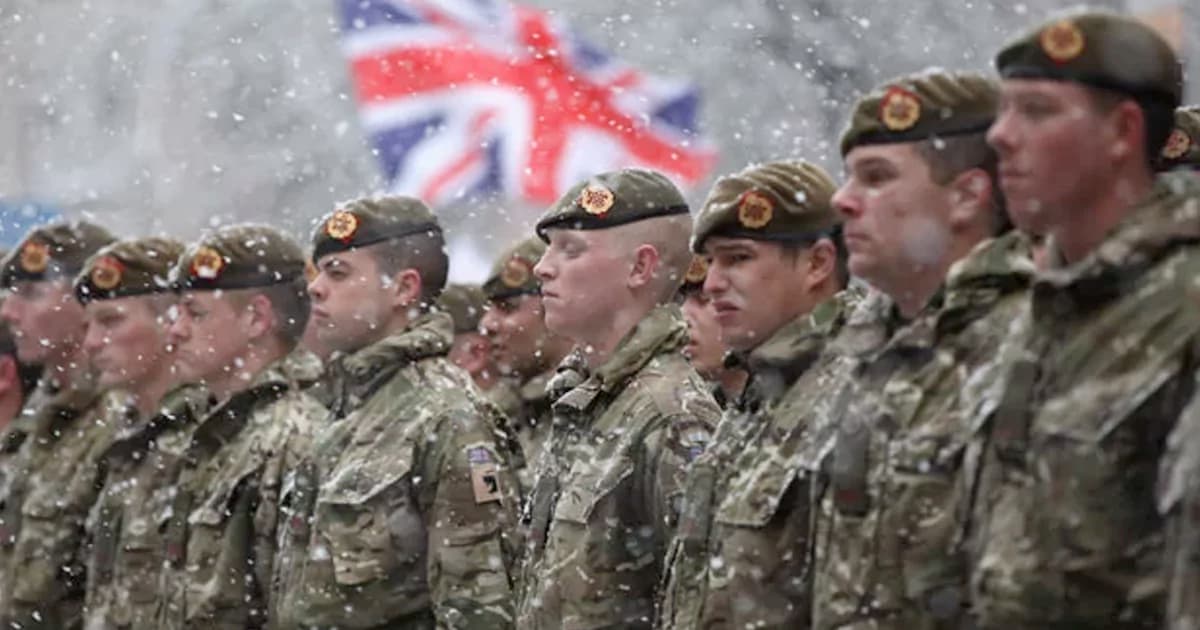UK Military Would Need ‘Ten Years Warning’ to Fight Off Russian Invasion: Top General
The armed forces of the United Kingdom have been degraded to such a degree that they would need “five to ten years” advanced warning to be able to fend off an invasion from a power such as Russia, a former top general warned.
General Sir Richard Barrons, who served as the commander of the Joint Forces Command (JFC) — which has since been renamed to Strategic Command (StratCom) — from 2013 until his retirement in 2016, blasted the country’s political leadership in Downing Street for failing to understand the paramount importance of being able to defend the realm.
“During the Cold War the Army, at all times, was ready to fight at four hours’ notice. When the Cold War ended and there was no sense of existential risk to the UK, all of that was dismantled,” General Sir Richard told the Daily Mail.
“Now we would need five to 10 years’ notice of a Russian surprise attack to manage to deal with it. That’s not a cool place to be… It’s deeply disappointing.”
For comparison, the Russian Federation has approximately 1,350,000 soldiers, over 30,000 armoured vehicles, and approximately 12,500 tanks, while the United Kingdom can only boast 137,000 active military personnel, just 5,015 armoured vehicles, and 227 tanks.
Despite the storied history of Britain’s Royal Navy, it has also dwindled to just 70 vessels compared to Russia’s 605, according to the paper.
“Russia is clearly angry and rearming so their capability will be restored and when the shooting stops in Ukraine, Russia will blame the outcome on us,” the former commander warned. “We are already in confrontation with Russia. Right now, we have chosen to do very little about it.”
Last week, Prime Minister Rishi Sunak’s government pledged to spend an additional £5 billion over the course of the next two years on defence — but this is far below the £11 billion reportedly requested by Defence Secretary Ben Wallace.
General Sir Richard noted that the £5 billion would not reverse planned cuts to the Army — which is expected to decline further by 3,000 troops to just 73,000 — as nearly all of the money has already been designated to upgrade the nation’s nuclear-armed submarines and restock ammunition stores that have been depleted by arms shipments to Ukraine.
“It probably suggests the heart of Government doesn’t really get it,” he explained. “The risks I and others see are not accepted by the Prime Minister and Chancellor. They are content to spend our money on a whole range of other things and then worry about defence later.”
“We’re still working on the old model to sort out the NHS, migration, and potholes then, if we really must, we will keep defence bubbling along.”
Despite the war in Ukraine, figures released by NATO earlier this week revealed that Britain’s defence spending fell from 2.25 per cent of GDP in 2021 to 2.16 per cent last year — although the UK was at least among only seven of the alliance’s 30 member-states to actually hit the 2 per cent of GDP requirement, with nations like Germany and France falling short yet again.
Prime Minister Rishi Sunak said that the government would seek to increase defence spending to 2.5 per cent of GDP, however he gave no specific timetable as to when this would be accomplished.
To put the spending in perspective, in terms of GDP military spending has been cut in half since 1980 when it stood at 4.1 per cent of GDP, and is currently just a fourth of what was spent in 1956 when the military budget stood at 8 per cent of GDP.
The number of active members in the military has also seen a dramatic decline over the same period, with the country being able to boast some 300,000 members in 1989 compared to around half that today.
